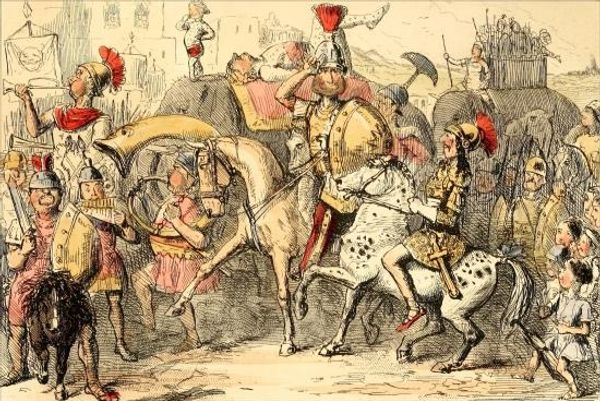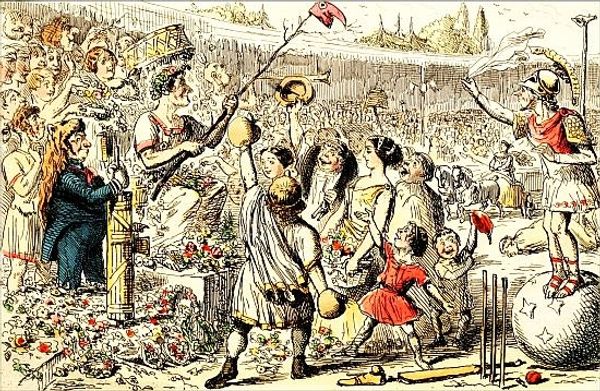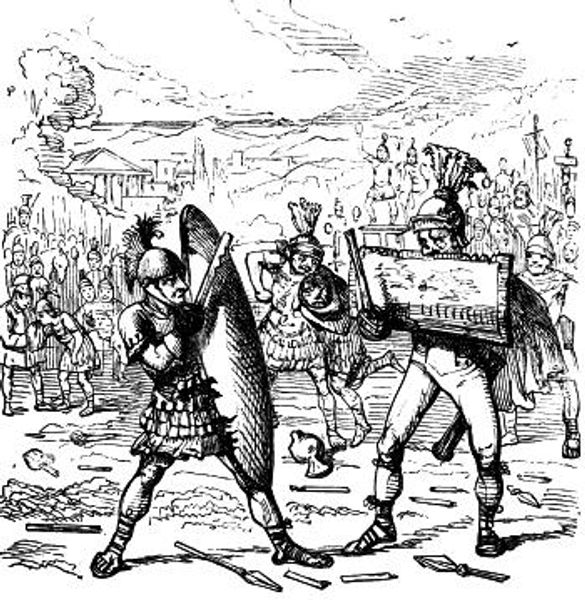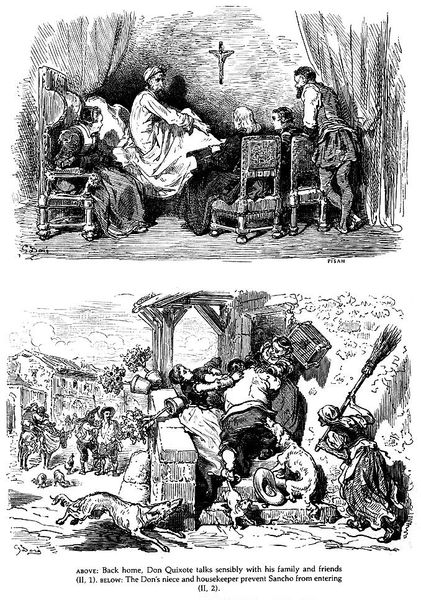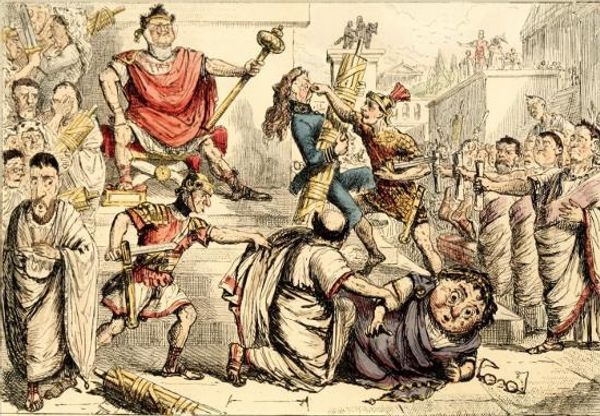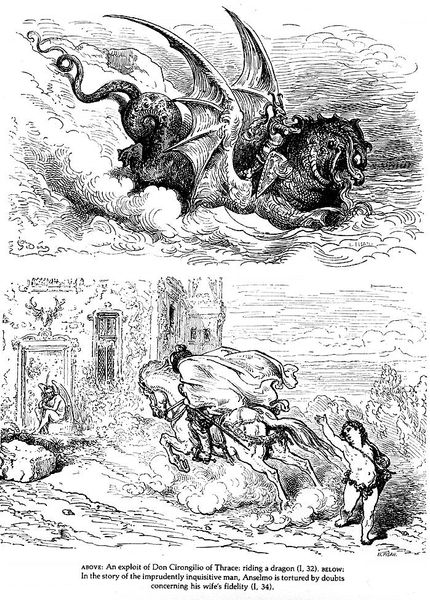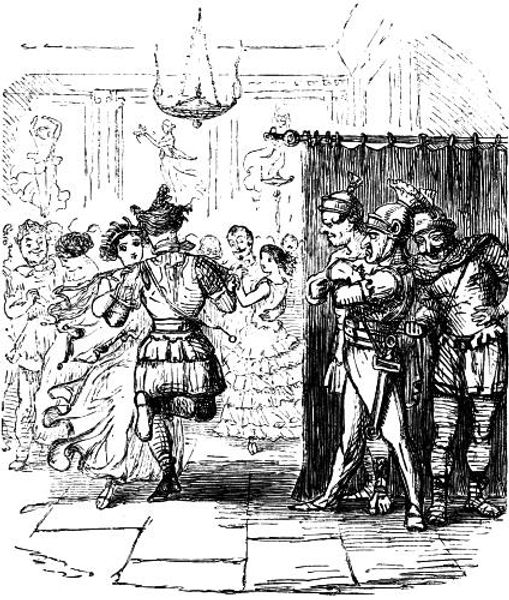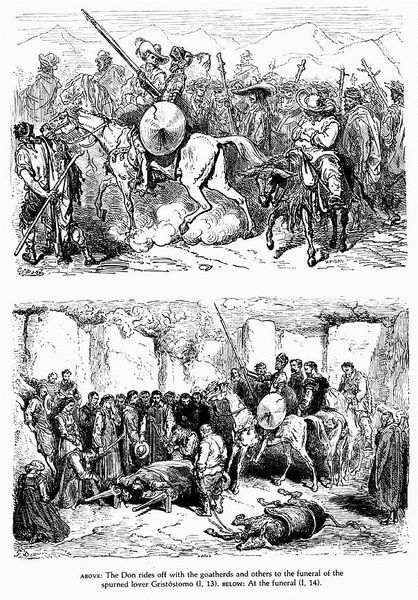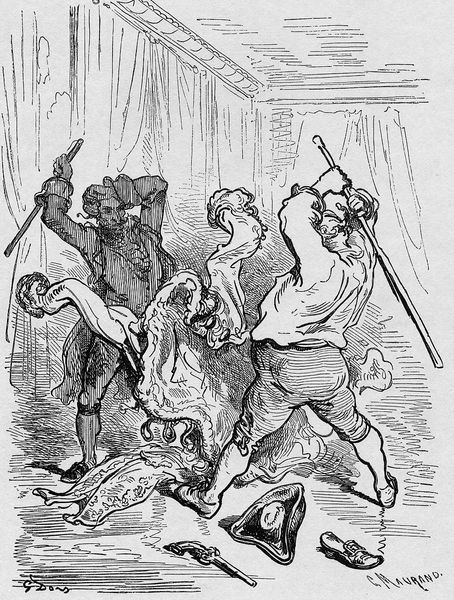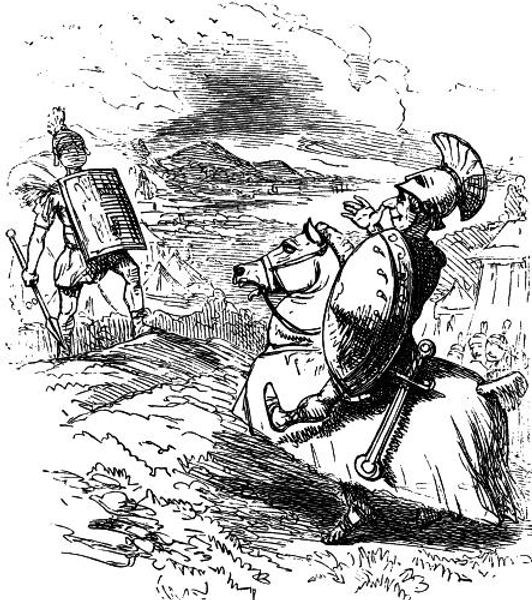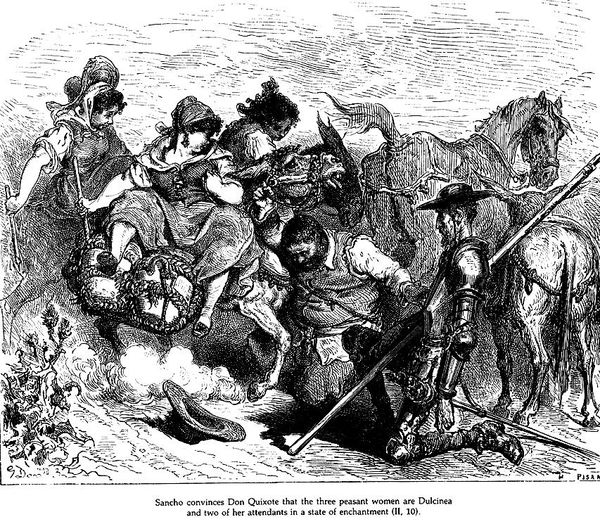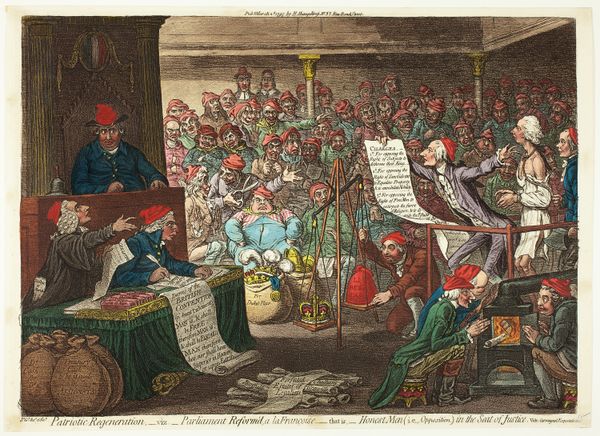
#
abstract painting
#
possibly oil pastel
#
handmade artwork painting
#
fluid art
#
traditional art medium
#
watercolour bleed
#
watercolour illustration
#
mixed media
#
watercolor
#
watercolur painting
Copyright: Public domain
Curator: Looking at "The Gallant Curtius Leaping into the Gulf," by John Leech, what springs to mind for you? The horse, suspended mid-air with the rider’s exaggerated, theatrical pose – what do you feel when you first view it? Editor: Well, my initial reaction is... chaos! It’s bursting with figures and activity. I’m struck by the spatial organization. There's this very dramatic diagonal line created by Curtius and his horse plummeting down. Curator: It’s utter madness, isn’t it? Leech manages to blend, in this historical representation, grand heroism with the ridiculous. Do you notice the gazes, the spectators on the left seem utterly engrossed by what is about to occur? Editor: Absolutely, their expressions and postures – there’s an almost theatrical quality to them. And yes the faces of the onlookers create depth of the composition of the scene onlooking. What draws my eye also is how he uses the different planes: backgrounded architectural structure, the cliff, with spectators at its top; Curtius and his steed leap to dominate foreground space with all its narrative elements. It seems like it's crafted to highlight not just Curtius but the dramatic situation in itself. Curator: Precisely! But let’s not forget the undertones of satire. While based on an ancient Roman myth where Curtius sacrifices himself for Rome, it’s also playing on contemporary British society and their supposed values. Editor: Yes, Leech’s command of detail—down to the figures in background and foreground – enriches a scene whose details satirically convey a social context rooted at heroic action but framed with the perspective and critique of modern life… The interplay of line and color seems meticulously plotted in order to give both weight but also humour to it. Curator: The scene as a whole really. What do you make of that now? Does your view shift or change once you've considered the context? Editor: It adds layers. Before, it felt merely dramatic, but now, recognizing the humor, I see Leech skewering that idea of sacrificing yourself for something that’s supposedly for a greater cause. It’s powerful stuff; so skillfully and thoughtfully implemented using semiotics, structuralism to explore humanistic philosophy.
Comments
No comments
Be the first to comment and join the conversation on the ultimate creative platform.
